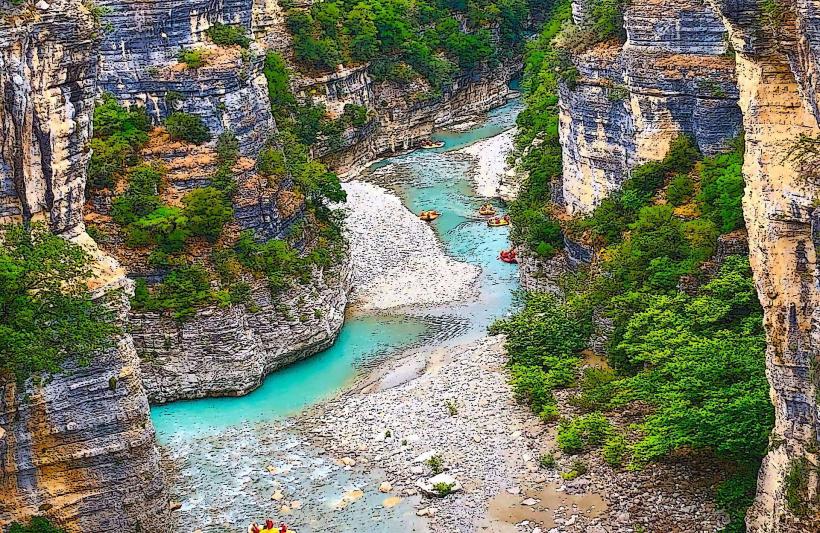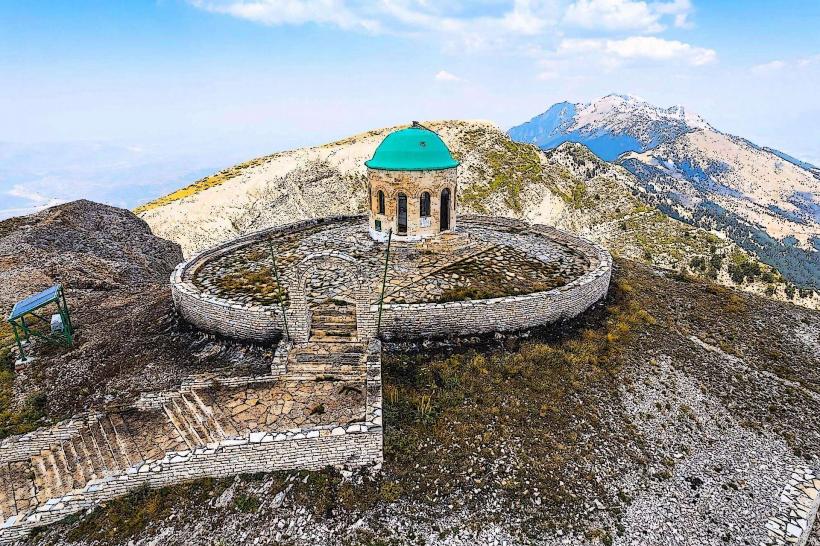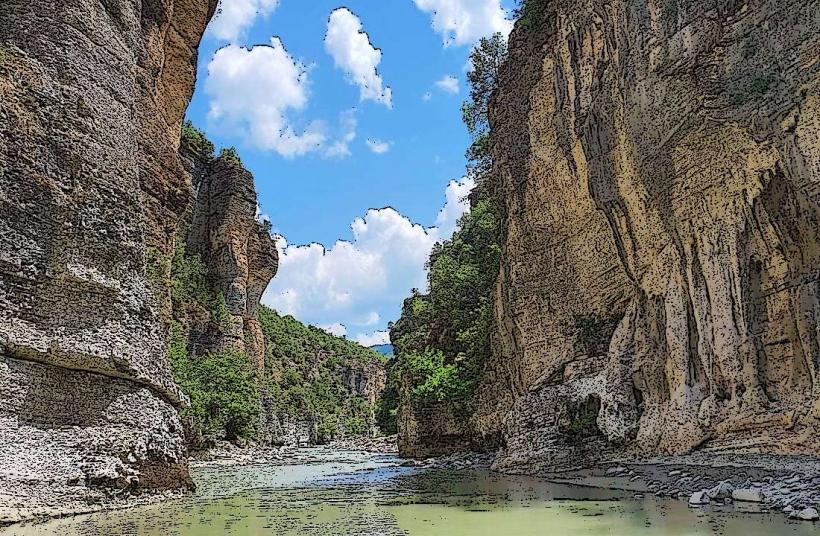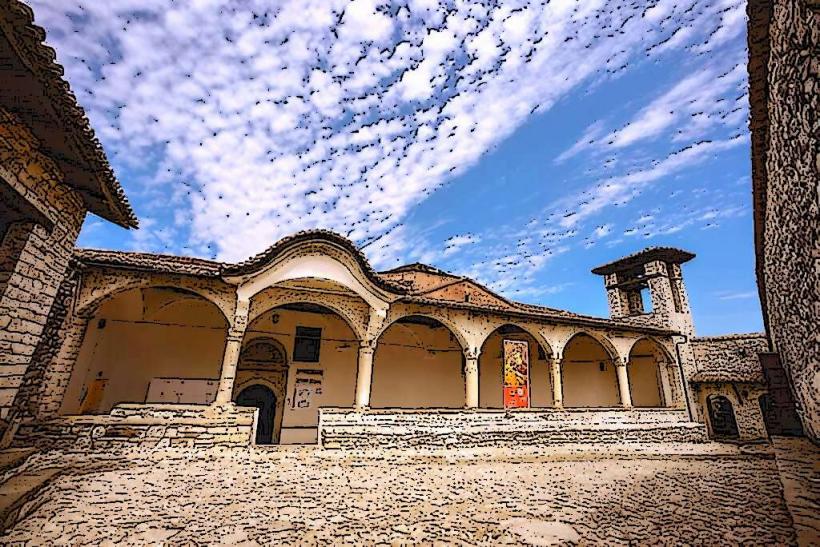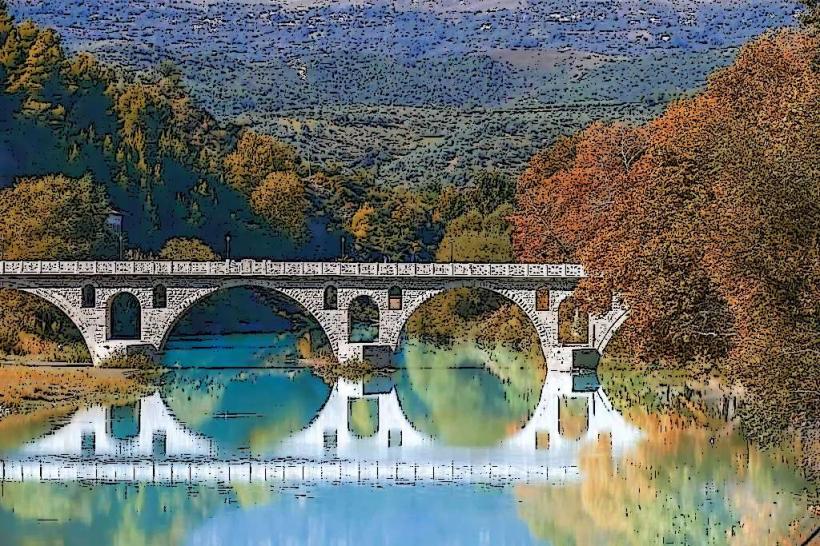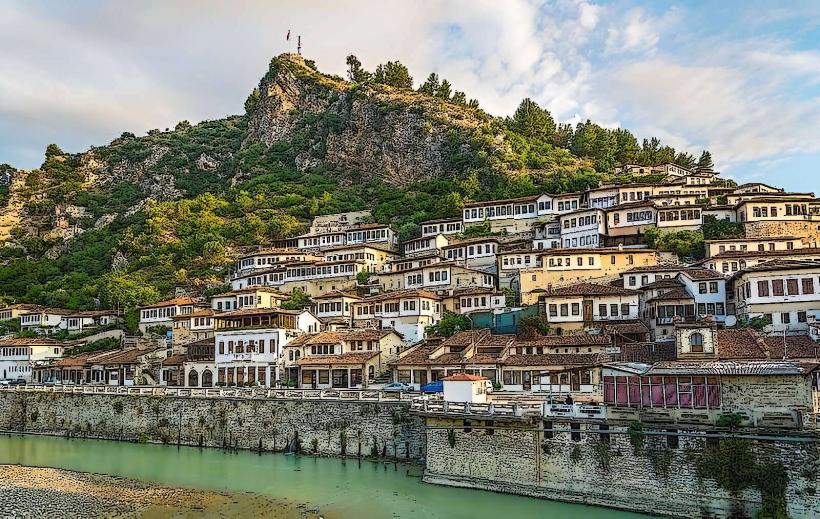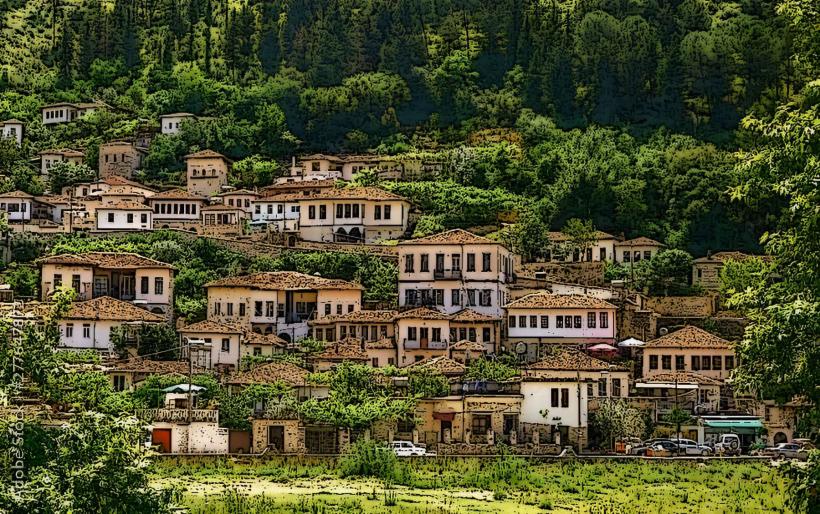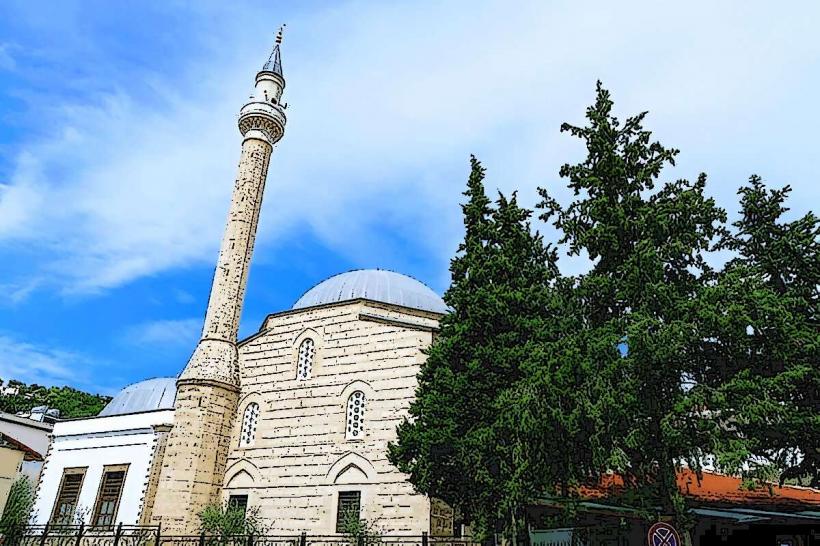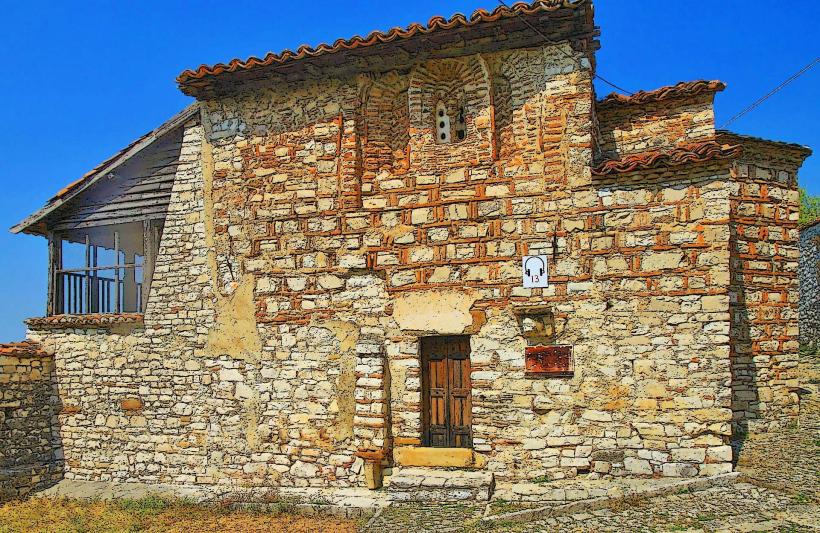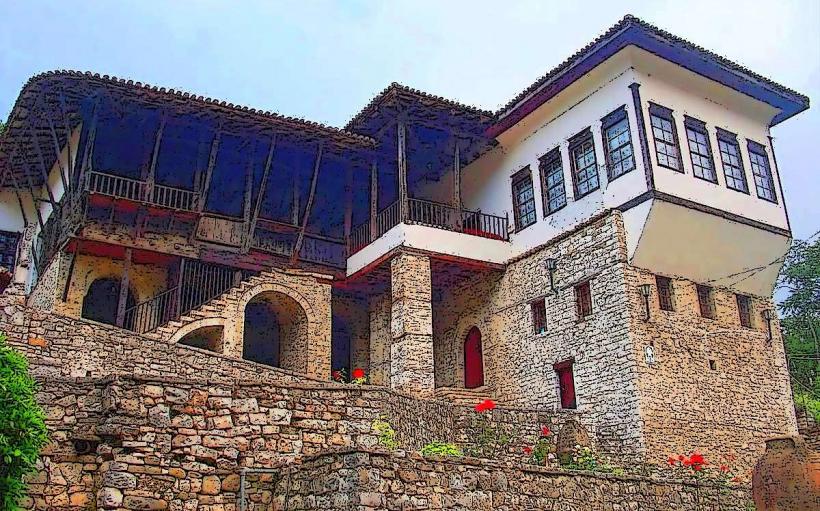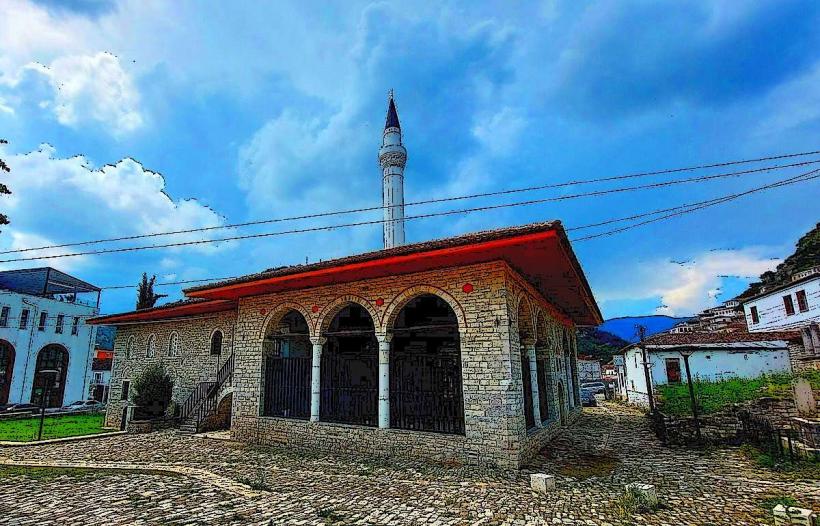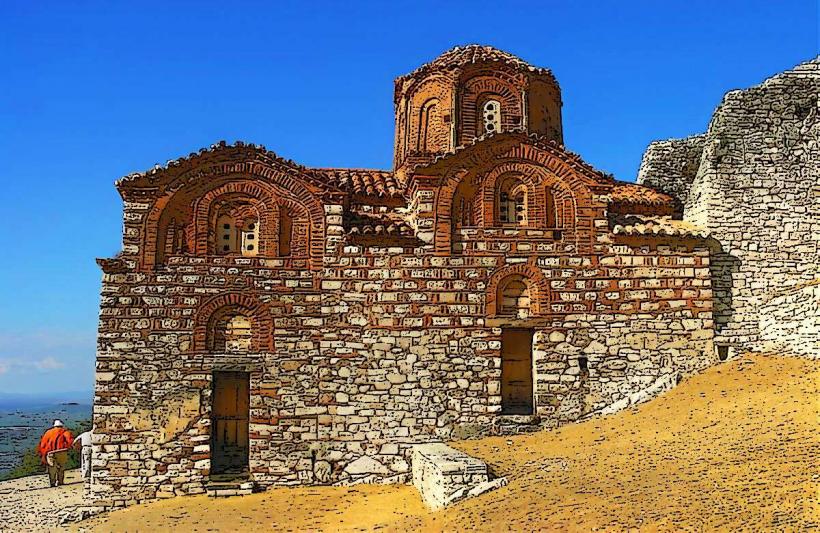Information
Landmark: Berat CastleCity: Berat
Country: Albania
Continent: Europe
Berat Castle (also known as Kalivo i Beratit or Castello di Berat) is a historic and architectural landmark located in the city of Berat, Albania. It is one of the most significant and well-preserved castles in the country, offering a glimpse into Albania's rich history and cultural heritage. The castle is perched on a hill overlooking the Osum River and offers breathtaking views of the surrounding landscape, the city itself, and the distant mountains. It is a UNESCO World Heritage Site, part of the city’s overall designation for its exceptional Ottoman-period architecture.
Historical Significance
Ancient Origins
- The origins of Berat Castle date back to the 4th century BC, making it one of Albania’s oldest fortifications. Originally built by the Illyrians, it later became a Roman, Byzantine, and Ottoman military stronghold. The castle’s strategic location atop a hill made it an ideal fortress throughout various historical periods.
- During the Byzantine era, Berat Castle became an important military and administrative center. It continued to serve as a fortress under the Ottoman Empire, which made significant additions to the castle’s structure, including the construction of new gates, towers, and walls.
Ottoman Influence
- The most significant changes to the castle occurred during the Ottoman period (15th–19th centuries), when the fortress underwent extensive renovations and expansion. The Ottomans fortified the walls, added new defensive structures, and transformed the castle into a symbol of their control over the region.
- The castle's role was to protect the city of Berat, which had become an important cultural and religious center, home to several notable churches and mosques. It served as both a military outpost and a residence for the local Ottoman governors.
Modern Day
- Today, Berat Castle is a major tourist attraction and a testament to the city’s rich history. It is one of the few castles in Albania that is still inhabited, with local people living within its walls. The castle is also used for cultural and historical exhibitions and hosts visitors from around the world.
Architecture and Layout
Defensive Walls and Gates
- The castle is known for its massive defensive walls, which were built using stone and mortar. The walls encircle the citadel and are designed to protect the castle from any external threats. The perimeter wall is punctuated by several gates, including the main entrance, which is still in use today.
- The main gate is a large, arch-shaped structure that opens into the heart of the castle. Visitors can pass through this entrance and enter a large open area, where they can explore the various buildings and structures that make up the castle complex.
Towers and Citadel
- Inside the castle walls, there are towers, bastions, and fortified positions. Some of the most prominent towers include the Hajdar Tower and the Cameria Tower, which offer panoramic views of the surrounding city and valley. These towers were used for surveillance, signaling, and defense purposes.
- The citadel area at the top of the hill features the remnants of several Byzantine-era churches and Ottoman mosques, as well as several administrative buildings and houses.
The Inhabited Castle
- Unlike many other historic castles, Berat Castle remains an inhabited site, with several homes and shops inside its walls. The small community within the castle still practices traditional ways of life, making it one of the few living historical sites in Albania.
Notable Attractions Within the Castle
Church of St. Mary of Blachernae
- One of the key attractions inside the castle is the Church of St. Mary of Blachernae, which dates back to the 13th century. The church is an excellent example of Byzantine architecture and features stunning frescoes and mosaics depicting scenes from the Bible.
- The church has a significant cultural and religious value, as it represents the Christian heritage of Berat and its longstanding relationship with the Byzantine Empire.
The Onufri Museum
- Inside the castle, the Onufri Museum is dedicated to the works of Onufri, one of Albania’s most renowned iconographers, who was active during the 16th century. The museum displays a collection of religious icons and artwork created by Onufri and other local artists, offering insight into the religious art of the region during the Ottoman era.
- The museum is housed in the Church of the Holy Trinity, a beautiful example of Byzantine architecture, and is an important stop for visitors interested in Albanian history and culture.
Other Churches and Mosques
- In addition to the Church of St. Mary of Blachernae, the castle complex contains several other churches and mosques, including the St. George Church and the Lead Mosque. These structures are important religious landmarks, showcasing the coexistence of Christian and Muslim traditions in Berat over the centuries.
Tourism and Visitor Experience
Panoramic Views
- From the castle, visitors can enjoy breathtaking views of the city of Berat, known as the "City of a Thousand Windows," as well as the surrounding Osum River Valley and the nearby mountains. The castle's elevated position provides a unique vantage point, perfect for photography and appreciating the beauty of the area.
Walking Tours
- Exploring Berat Castle is a popular activity for tourists. Walking tours are available, allowing visitors to delve into the history of the fortress while learning about its cultural significance. Tour guides often explain the history of the castle, the architecture, and the various historical events that took place within its walls.
- The narrow, winding streets inside the castle, along with its well-preserved structures, make it an engaging site to explore on foot. Visitors can walk through the maze-like pathways, stopping to admire the architecture, churches, and the view of the city below.
Cultural Events
- The castle is often used for cultural events, including festivals, music performances, and art exhibitions. These events bring the castle to life and offer a unique opportunity for visitors to experience the cultural heritage of Berat.
Practical Information
Opening Hours
- Berat Castle is open to the public year-round. The exact opening hours may vary depending on the season, but it is generally accessible during daylight hours. It is advisable to check in advance for specific times and any scheduled events or closures.
Entry Fees
- There is typically a small entry fee to visit Berat Castle. The fee helps with the maintenance of the site and supports ongoing preservation efforts. Fees may vary depending on whether you’re visiting the castle alone or in combination with other nearby attractions.
Getting There
- Berat is easily accessible from the Albanian capital, Tirana, which is about a 2.5-hour drive away. The city is well-connected by road, and there are regular buses from Tirana to Berat. Once in Berat, the castle is a short walk from the city center, and visitors can easily make their way up to the castle entrance.
Conclusion
Berat Castle is a must-visit destination for history enthusiasts, architecture lovers, and those interested in experiencing Albania’s rich cultural heritage. The castle’s stunning views, ancient walls, and well-preserved structures provide a fascinating journey through time. Whether you're exploring its Byzantine churches, Ottoman mosques, or simply enjoying the panoramic vistas, Berat Castle is a true gem of Albania's historical landscape.

